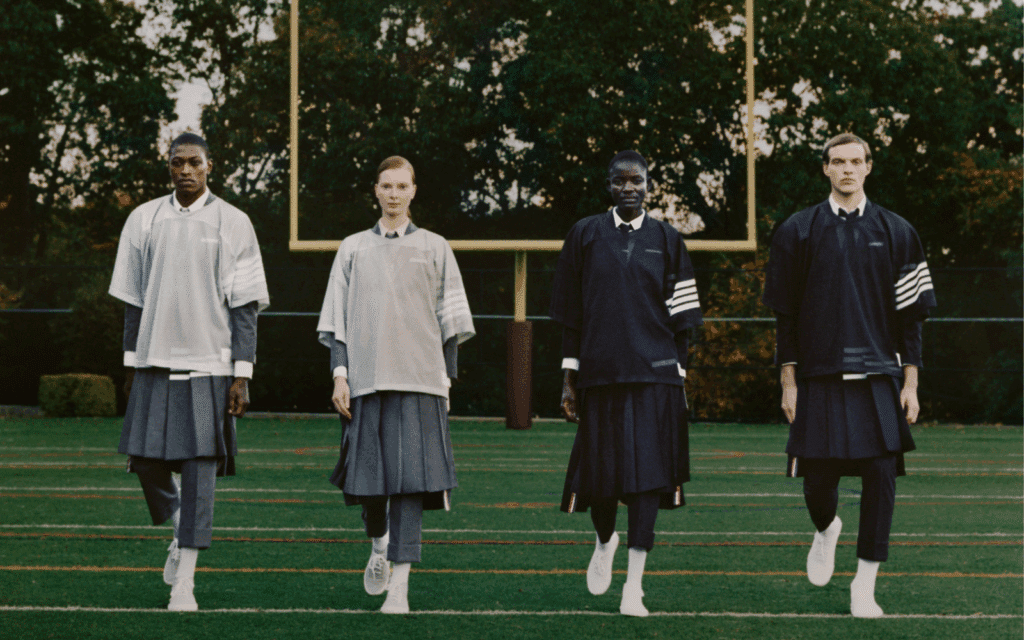In the sleepy days between Christmas 2017 and the early days of 2018, Forever 21 set into motion a plan to defend itself against the headline-making legal battle that Puma had thrust upon it months earlier. That spring, Puma filed a strongly-worded lawsuit against the Los Angeles-based fast fashion giant, calling out its “systematic infringement” of others’ intellectual property, and in particular, alleging that it had run afoul of trade dress, design patent, and copyright law by selling copycat versions of footwear from Puma’s much-hyped collaboration with Rihanna.
Forever 21’s legal counsel had crafted a defense that would, they hoped, rob Puma of the bulk – if not all – of its infringement claims, and thereby, enable Forever 21 to escape liability. Such a move would require Forever 21 to invalidate the intellectual property rights upon which the German sportswear giant had built its case, including at least one federally-issued design patent.
So, Forever 21 – taking carefully calculated steps towards that goal – requested that the court require Puma, plus a handful of entities not named in the lawsuit, to turn over information regarding Rihanna’s actual level of involvement in her various ventures, including her Puma collaboration. The fast fashion entity wanted specifics from the singer, herself, her record label, Roc Nation, and Kendo Holdings, the LVMH-owned entity responsible for manufacturing and marketing the Fenty Beauty collection as part of a joint venture with the singer.
Such behind-the-scenes details about Rihanna’s various endeavors would help Forever 21 to bolster the damning argument that it would make: Puma had been “misrepresenting material facts to the U.S. Patent and Trademark Office [“USPTO”] and the Copyright Office” about – exactly – designed the Fenty x Puma shoes at the center of the litigation.
Just weeks prior, Forever 21’s attorneys had uncovered a striking discrepancy. While Puma was “publicly advertis[ing] that Rihanna herself designed the shoes” at the center of the lawsuit, Puma had not listed her as the designer/creator of the shoes in its corresponding design patent and copyright documentation.
“Rihanna is not named as an author on Puma’s copyright applications or as an inventor on Puma’s design patents,” Forever 21’s lawyers told Judge Philip S. Gutierrez of the Central District of California Court in a filing in 2017. Instead, Ricardo Pina – who held the role of senior footwear designer for Puma’s collaborations during the time of the Fenty Puma partnership – was the individual identified as the creator/inventor of the shoes.
“There are only two logical conclusions to draw from these facts,” Forever 21 argued. Either “Puma misrepresented material facts to the [USPTO] and the Copyright Office,” by naming Pina – and not Rihanna – as the creator of the footwear, “thereby committing fraud.” Or … “Puma misrepresented to the consuming public that Rihanna designed the shoes at-issue in this case” when she did not. Either way, something was amuck.
If Forever 21 could successfully show that Puma has presented inaccurate information to the USPTO and the Copyright Office, it just might be able convince the court to invalidate Puma’s design patent and see that the copyright applications were shut down, as well. More than that, such a move would enable Forever 21 to potentially walk away from the case relatively unscathed.
Potentially prompted by the high-stakes nature of Forever 21’s findings, the parties quietly settled the case out of court just before turning the page on 2018.
Because the settlement came before any determinations were made as to the merit of Puma’s intellectual property filings (or lack thereof in light of such alleged discrepancies in terms of Rihanna’s level of creative involvement), a question remains: has Puma run afoul of federal advertising laws by overtly asserting or heavily implying that Rihanna served in a design role when she was not necessarily doing so?
“Far More Than an Ambassador”
In asserting that “Puma [may have] misrepresented to the consuming public that Rihanna designed the shoes at-issue in this case,” and seeking additional information from Puma and several other parties tied to Rihanna, Forever 21 appeared to be planting a seed to build claims of its own, ones centering on false advertising.
But bringing an actionable claim for false or misleading advertising is no simple matter. It requires a party to show a number of things, including: 1) the defendant brand made an explicit claim – or sent an implicit message (via imagery, for instance) about its own or another’s products, 2) the claim was false or misleading, and 3) that false or misleading claim is “material,” meaning that it is likely to impact the purchasing decisions of consumers in connection with the products at issue.
Effectively targeting Puma would mean showing that the sportswear brand presented Rihanna as a central participant in the design process when she was not, and that as a result, consumers have been – or are likely to have been – misled, and as a result, their purchasing decisions in connection with the Fenty x Puma footwear were impacted.
 image: Puma
image: Puma
What is the likelihood that Forever 21 could prevail? Well, based on Puma’s explicit statements and imagery, an argument could very well be made that Puma depicted Rihanna as being more than merely an ambassador enlisted exclusively to advertise a collection with her name on it, and instead, was positioned as a participant in the actual design/development of the footwear.
Consider statements that Adam Petrick, Puma’s global director of brand and marketing, made publicly about the Fenty collection. He praised Rihanna’s “creativity” to Forbes in 2017, saying that she “is far more than an ambassador of the Puma brand.” On another occasion, he told Marketing Week that Puma planned for Rihanna to be “heavily” involved in the creative process, and noted that she would work with Puma’s internal product creation team. He similarly boasted that she “not only is she coming in as an ambassador,” and that she “has tremendous knowledge of product design.”
Still yet, you may recall seeing images of Rihanna – courtesy of Puma – that show her sketching “in one of her Puma Fenty design meetings,” potentially compounding the message that she was, in fact, involved in the designing of the shoes. (Consumer surveys would need to be used here to determine whether individual actually – and/or likely – believed that the message being communicated was that Rihanna helped to design the collection).
With such explicit and implied messaging in mind, the question becomes: is the statement that Puma is sending untrue or misleading? Forever 21, for one, certainly seems to think it is, noting that Puma has “publicly advertised that Rihanna herself designed the shoes,” while its design patent registration and copyright applications for the shoes tell a very different story.
But wait … Is there a chance that Rihanna was in fact, a creator of the footwear but simply is not listed on the legal filings? That is highly unlikely.
“The consequences of not naming the correct inventors” in the case of a patent, for instance, “can be severe,” says Jim Singer, the chair of Fox Rothschild LLP’s Intellectual Property Department. Should the USPTO learn that a patent-filing party intentionally failed to name the proper inventors, that patent will be deemed invalid, resulting in a marked – and costly – loss for the filer. This makes for a strong incentive for companies to properly identify the inventors, even if they would prefer to list, say, “a CEO, chief technology officer, or lead designer as an inventor,” according to Singer.
As for what exactly is required for an individual to be named as an inventor on a design patent, the bar is not necessarily very high. As long as the individual is involved in “the conception of the [design],” per Singer, he/she will be considered an inventor, and listed in the corresponding patent filings.
“Someone who suggests only one feature of the invention – no matter how small – is a co-inventor if the patent claims that feature,” he notes. However, on the other hand, “Someone who merely leads the team or suggest the problem to be solved is not an inventor.”
Design patent filings for some of the biggest names in fashion are telling. Hedi Slimane, Alessandro Michele, Nicolas Ghesquiere, and Phoebe Philo’s names can be found on a list of design patents for luxury brand products. In other words, it is not uncommon to see creative directors – the role that Rihanna held at Puma – listed as inventors. Still yet, Rihanna’s name is absent from all of Puma’s filings.
Assuming that Puma (hypothetically) did make false or misleading statements about the Grammy winner’s role in the creation/design of the footwear, there is still one more question that must be answered: how likely is it that Puma’s presentation of Rihanna as heavily involved in the design of the footwear will impact consumers’ willingness to buy the products?
It might be here that Puma could find an out … because such an argument does not take into account one very important element: the truly gargantuan level of fame and influence that a figure like Rihanna possesses.
What’s in a Title?
Given the amount of recognition associated with a star of Rihanna’s caliber and the truly ardent nature of her following, there is a chance that the use of her name, alone, in connection with a product – which (I would argue) on its face likely does not imply that she is the designer – is enough to entice consumers to buy. In fact, there is a significant chance that most of her loyal fans – and there are tens of millions of them – do not care if she is or is not involved in design, regardless of what Puma says or implies.
In theory, this could potentially let Puma off the hook in a hypothetical false advertising case. After all, in order for a claim to amount to false advertising, it must be “likely to influence purchasing decisions.”
This “too famous for their actual role to matter” rationale might also serve to save adidas from landing at the center of a similar legal mess. Despite adidas declaring that “together with West, a dedicated adidas team will lead the development and creation of all YEEZY products” and praising the rapper as “a fantastic creator” in connection with the in-demand sneakers, West is not named as the inventor of any of the Yeezy footwear.
Instead, adidas designers Nic Galway and Aurelien Longo are listed as inventors of design patents for the Yeezy 750 Boost (for which adidas holds more than one design patent registration). Galway, alone, is the inventor of the patent-protected classic Yeezy boost sneaker and variations thereof.
Yet again, while almost all of the elements necessary for making a false advertising claim might otherwise check out, an argument could likely be made by adidas that consumers are not buying these sneakers because they think – or care – that Kanye West did or did not create them. They are buying simply because his name is attached to them and he actively promotes them.
“People buy the Ultra Boost because Kanye wore them,” and because of “his association with the company,” menswear site Complex wrote last spring. In other words, they likely don’t care who did the dirty work.














